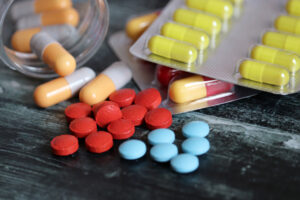Neurology
Epilepsy
Psychiatric Comorbidity and the Evaluation of Epilepsy
Overview
Several abstracts presented at AES2020 focused on managing common emotional symptoms associated with epilepsy. Among the topics being considered were patient perceptions of mental health, rapid screening tools for anxiety and depression, and the importance of video-electroencephalography (VEEG) in the evaluation of suspected dissociative seizures.
Following these presentations, our featured expert, Gregory L. Krauss, MD, was interviewed by Conference Reporter Editor-in-Chief Tom Iarocci, MD. Clinical perspectives on these findings from Dr Krauss are presented here.
Gregory L. Krauss, MD
|
|
“Clinicians should consider incorporating rapid screening tests for anxiety and depression into their standard screening during clinic visits, and perhaps providing select tools for home use to patients to monitor for emotional symptoms.”
It is important to understand the barriers to obtaining appropriate mental health care and support among patients with epilepsy, as these individuals have increased risks for comorbid psychiatric conditions such as depression and anxiety. The study reported in abstract 549 at AES2020 evaluated such barriers by asking 100 patients in the USC Comprehensive Epilepsy Center at Keck Medicine of USC to complete questionnaires on this topic. Most of the participants felt that providers regularly monitored them for mood symptoms, and more than half thought that epileptologists should treat the patients’ mood disorders. On their screenings, approximately one-third of patients with epilepsy had evidence of major depression, and slightly more than one-third had moderate or severe anxiety. In contrast, approximately one-fourth of patients were currently seeing a mental health provider. Further, the author reported that the most common barrier to mental health care was the patient’s belief that there was no need to see a mental health provider. This was followed by the expectation of significant insurance and cost barriers to seeing a mental health therapist, while smaller subsets of patients indicated that they had insufficient time to receive treatment and/or had concerns related to a lack of local providers or worries about stigma. Patients who did not see a mental health provider were significantly more likely to have worse scores on the depression and anxiety inventories. Many patients with epilepsy are treated for depression or anxiety by their general physicians; however, these data suggest that such treatment, if offered by neurologists/epileptologists, might help to overcome some of the obstacles to mental health care for these patients.
Methods for screening for psychiatric comorbidities in the clinic is also an area of continued interest. Recent recommendations encourage screening for depression and anxiety at every epilepsy visit and endorse abbreviated instruments such as the Patient Health Questionnaire-2 (PHQ-2) and the Generalized Anxiety Disorder-2 (GAD-2) ultra-brief screeners. In abstract 973, several screening instruments were assessed prospectively by 3 adult epileptologists in a tertiary epilepsy practice. Consecutive patients completed the GAD-7 and the Neurological Disorders Depression Inventory for Epilepsy (NDDI-E) with embedded ultra-brief scales (ie, GAD-2, GAD-Single Item [GAD-SI], and NDDI-E 2 item [NDDIE-2]) on a tablet; ultra-brief PHQ-2 (yes/no version) were also documented in the medical record by clinic nursing staff. The NDDIE-2, GAD-2, and GAD-SI all had acceptable areas under the receiver operating characteristic curve, while the interview-administered yes/no PHQ-2 instrument had low sensitivity compared with the NDDI-E. Among 422 individuals, the prevalence of anxiety identified by GAD-7 was 24% and depression by NDDI-E was 20%. Seizure freedom was linked to lower anxiety and depression prevalence than continued seizures. The authors also reported that, besides poor concordance between the PHQ-2 and the NDDI-E, the other screener pairs had acceptable concordance. These ultra-fast instruments may provide a way to quickly screen and identify these conditions. Clinicians should consider incorporating rapid screening tests for anxiety and depression into their standard screening during clinic visits, and perhaps providing select tools for home use to patients to monitor for emotional symptoms.
Another study at AES2020 assessed the workup for patients with potentially nonepileptic dissociative episodes. In abstract 248, researchers sought to determine why VEEG and diagnosis are often delayed in patients with dissociative seizures (DS; ie, functional or psychogenic nonepileptic seizures). This analysis showed that there is somewhat of a nonlinear delay where some patients with DS are diagnosed early within 1 year, usually earlier if dissociative episodes are interfering with work or education. VEEG is the gold standard for distinguishing DS from canonical epileptic seizures. However, delays in accurate diagnosis are associated with worse prognosis regarding seizure frequency, quality of life, health care utilization, and iatrogenic harm from antiseizure medications, including treatment of prolonged DS as status epilepticus. This study found that patients with potentially higher impact of seizures on their lives have a shorter time to VEEG, as do those with canonical features of seizures. More complex medical history, multiple seizure types, and adverse response to antiseizure medications were associated with longer time to VEEG. Thus, complex cases may benefit from earlier referral for VEEG, which may identify DS. If VEEG does not identify DS, these cases may benefit from more specialized care of epilepsy.
In summary, the diagnosis and treatment of comorbid psychiatric disorders remain important components of the care of patients with epilepsy. Many of these patients have major depression and anxiety disorders but are often reluctant to seek treatment. Neurologists can play a more active role in helping to overcome some of the barriers to appropriate care, and rapid screening tests may be increasingly utilized to identify and monitor mood disorders in patients with epilepsy.
References
Benard S. Patient perceptions of mental health treatment in epilepsy [abstract 549]. Abstract presented at: AES2020; December 4-8, 2020.
Clary HM, Wan M, Brenes G, et al. Examining brief and ultra-brief anxiety and depression screening methods in a real-world epilepsy clinic sample [abstract 973]. Abstract presented at: AES2020; December 4-8, 2020.
Kanner AM, Ribot R, Mazarati A. Bidirectional relations among common psychiatric and neurologic comorbidities and epilepsy: do they have an impact on the course of the seizure disorder? Epilepsia Open. 2018;3(suppl 2):210-219. doi:10.1002/epi4.12278
Kerr W, Zhang X, Janio E, et al. Why is video-EEG delayed in dissociative seizures [abstract 248]? Abstract presented at: AES2020; December 4-8, 2020.
Kim D-H, Kim Y-S, Yang T-W, Kwon O-Y. Optimal cutoff score of the Neurological Disorders Depression Inventory for Epilepsy (NDDI-E) for detecting major depressive disorder: a meta-analysis. Epilepsy Behav. 2019;92:61-70. doi:10.1016/j.yebeh.2018.12.006
Patel AD, Baca C, Franklin G, et al. Quality improvement in neurology: epilepsy quality measurement set 2017 update. Neurology. 2018;91(18):829-836. doi:10.1212/WNL.0000000000006425
This information is brought to you by Engage Health Media and is not sponsored, endorsed, or accredited by the American Epilepsy Society.











